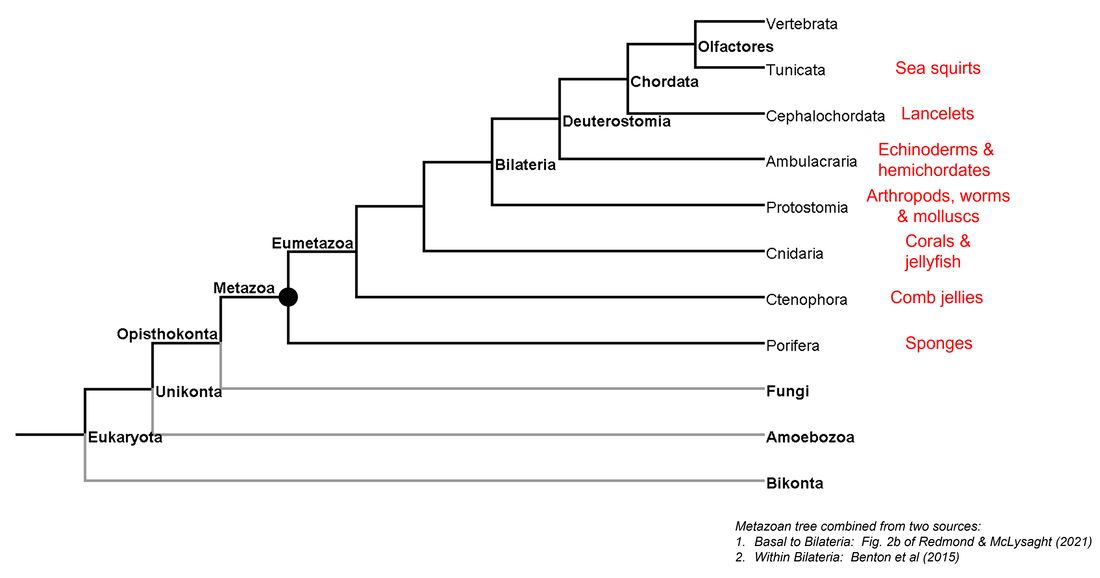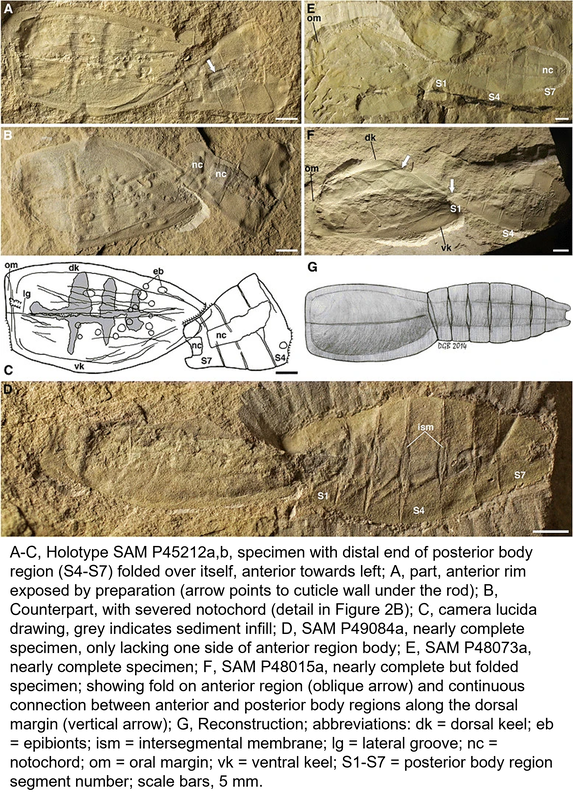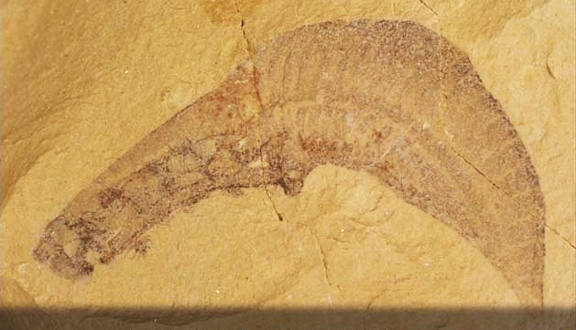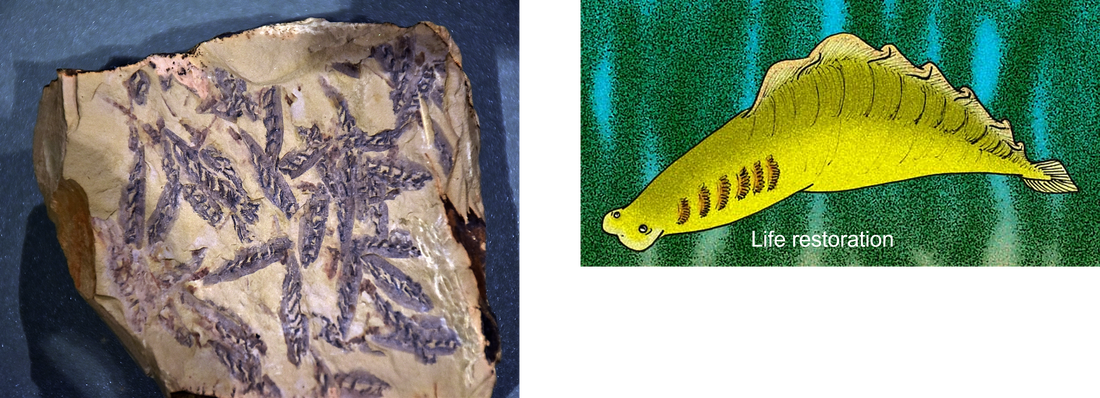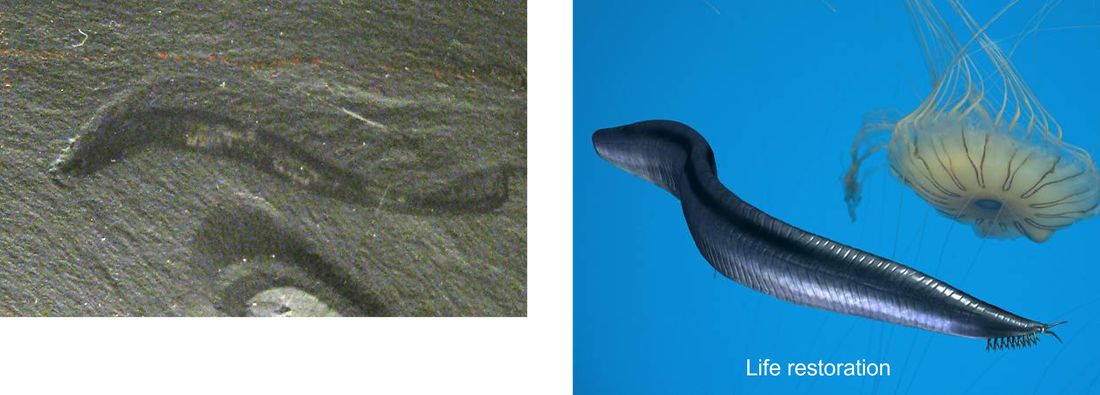The animals (Kingdom Animalia), otherwise known as the Metazoa, represent one of the two groups to be considered in this website, the other being the Land Plants. The phylogenetic context of the animals is illustrated in the following phylogenetic time tree:
Figure 1. Phylogenetic time tree showing first appearance of total-group clades within the Unikonta
The above tree illustrates the large amount of time (at least a billion years) that elapsed between the appearance of the eukaryotes and that of the Metazoa.
The phylogenetic relationships within the metazoans are illustrated in the following tree:
The phylogenetic relationships within the metazoans are illustrated in the following tree:
Figure 2. Summarized phylogenetic tree of the Metazoa
The crown node of the animals is shown as a black dot. The phylogenetic tree shown above is only one of several that are currently under consideration in the literature, given that there is still no consensus over the phylogenetic relationships between the component clades of the Metazoa. One of the unresolved uncertainties concerns whether the sponges (Porifera) are basal to the comb jellies (Ctenophora) or vice versa (Redmond and McLysaght, 2021).
On this page we will consider only the transition to the metazoan crown group as no literature pertaining to stem-Opisthokonta or stem-Unikonta has been found in the research carried out for this website.
All the animal groups on the right hand side of the above tree, with the exception of the Cephalochordata, will be considered in the following sections of the website. (The Cephalochordata are excluded because of their lack of a known fossil record.) These groups belong to several higher categories:
Of the groups on the right hand side of the tree, only three are phyla: Ctenophora, Porifera and Cnidaria. The rest represent higher or, in the case of the Cephalochordata, lower groups:
On this page we will consider only the transition to the metazoan crown group as no literature pertaining to stem-Opisthokonta or stem-Unikonta has been found in the research carried out for this website.
All the animal groups on the right hand side of the above tree, with the exception of the Cephalochordata, will be considered in the following sections of the website. (The Cephalochordata are excluded because of their lack of a known fossil record.) These groups belong to several higher categories:
- Eumetazoa: all animals except the sponges (Porifera); in some classifications, ctenophores are excluded from the eumetazoans
- Bilateria: all animals with a body form exhibiting bilateral symmetry
- Deuterostomia: bilaterans in which the anus forms before the mouth during development of the embryo
- Chordata: having at some point in their life cycle several unique features, including a notochord (a stiff cartilaginous rod supporting, the nerve cord)
- Olfactores: all chordates except the Cephalochordata.
Of the groups on the right hand side of the tree, only three are phyla: Ctenophora, Porifera and Cnidaria. The rest represent higher or, in the case of the Cephalochordata, lower groups:
- Protostomia: bilaterans in which the mouth forms before the anus during development of the embryo; includes the arthropods, worms and molluscs
- Ambulacraria: living representatives comprise the echinoderms and the hemichordates
- Cephalochordata: soft-bodied chordates without true vertebrae; living representatives are the lancelets
- Tunicata: chordates with a polysaccharide exoskeleton
- Vertebrata: chordates with vertebrae.
Origin of the animals
The fossil record is less useful for determining the origin of animals than it is for later transitions. There are two main reasons for this. One is that the early animals are generally soft-bodied, and thus tend not to be well preserved as fossils. The other issue is the difficulty of relating the earliest fossils of multicellular organisms to the extant taxa of animals, as well expressed by Budd (2001):
“Useful stem-group taxa are unfortunately difficult to assign, as they lack diagnostic features of crown groups. Further, unlike stem groups that lie within extant phyla, which often have their basal nodes well known, fossils that lie within the stem-groups of phyla, which have virtually unknown basal nodes, cannot be assigned to that place except on the basis of shared similarities with the crown group. As a result, very basal stem-group forms may be completely unrecognized.”
The above statement was made in the context of defining synapomorphies for the stem groups of the phyla or clades within the Metazoa, but it applies with even more force to the search for fossils that might represent the metazoan stem group. A further problem is that it is not clear whether some of the fossils being considered as stem-Metazoa even represent animals at all (for discussion of a non-metazoan multicellular fossil, see Agić et al, 2019).
The reality is that there is still no consensus assignment of any single fossil to the animal stem group.
However, a growing amount of literature on the famous "Ediacaran biota" of Late Neoproterozoic (Ediacaran) age is providing important clues as to how early animals developed.
“Useful stem-group taxa are unfortunately difficult to assign, as they lack diagnostic features of crown groups. Further, unlike stem groups that lie within extant phyla, which often have their basal nodes well known, fossils that lie within the stem-groups of phyla, which have virtually unknown basal nodes, cannot be assigned to that place except on the basis of shared similarities with the crown group. As a result, very basal stem-group forms may be completely unrecognized.”
The above statement was made in the context of defining synapomorphies for the stem groups of the phyla or clades within the Metazoa, but it applies with even more force to the search for fossils that might represent the metazoan stem group. A further problem is that it is not clear whether some of the fossils being considered as stem-Metazoa even represent animals at all (for discussion of a non-metazoan multicellular fossil, see Agić et al, 2019).
The reality is that there is still no consensus assignment of any single fossil to the animal stem group.
However, a growing amount of literature on the famous "Ediacaran biota" of Late Neoproterozoic (Ediacaran) age is providing important clues as to how early animals developed.
The Ediacaran biota
The Ediacaran biota occur in sediments of Late Ediacaran age in several sites around the world but the most important areas of occurrence are in Newfoundland, Canada (the Avalon assemblage), northeast Russia (the White Sea assemblage) and in Namibia, southwest Africa (the Nama assemblage). These assemblages partially overlap in geological age, but the Avalon contains the oldest representatives of the Ediacaran biota, while the Nana contains the youngest, as indicated in the figure below:
The Ediacaran biota occur in sediments of Late Ediacaran age in several sites around the world but the most important areas of occurrence are in Newfoundland, Canada (the Avalon assemblage), northeast Russia (the White Sea assemblage) and in Namibia, southwest Africa (the Nama assemblage). These assemblages partially overlap in geological age, but the Avalon contains the oldest representatives of the Ediacaran biota, while the Nana contains the youngest, as indicated in the figure below:
Figure 3. Stratigraphy of the Ediacaran biota (from Figure 1C of Zhao et al (2024); see image credit at bottom of page)
As indicated above, the oldest known members of the Ediacaran biota are macrofossils of the Avalon assemblage. They are found in the Ediacaran Drook Formation in the Mistaken Point Ecological Reserve, Newfoundland, Canada (Liu et al, 2012; Matthews et al, 2021). Figure 3 also depicts the main taxonomic groups found in each of the three assemblages; representative fossils from these groups are illustrated below (for a larger view, click on image):
Figure 4. Ediacaran fossils of uncertain taxonomic placement
Note that two of these fossils (Dickinsonia cf. menneri and Tribrachidium heraldicum) show evidence of mobility in the form of traces in the surrounding sediment.
The relationship of the Ediacaran biota to extant clades within the Eumetazoa remains unclear, but there is general agreement that they probably represent stem-Eumetazoa (Dufour and McIlroy, 2017; Hoyal Cuthill and Han, 2018; Runnegar, 2022). However, the Ediacaran assemblages also contain fossils that are increasingly being considered as possible stem-group members of known clades within the Metazoa (Darroch et al, 2023). Some of these, together with an older fossil from the Early Ediacaran (the possible sponge Eocyathispongia qiania) are illustrated below (click on image for a larger view):
The relationship of the Ediacaran biota to extant clades within the Eumetazoa remains unclear, but there is general agreement that they probably represent stem-Eumetazoa (Dufour and McIlroy, 2017; Hoyal Cuthill and Han, 2018; Runnegar, 2022). However, the Ediacaran assemblages also contain fossils that are increasingly being considered as possible stem-group members of known clades within the Metazoa (Darroch et al, 2023). Some of these, together with an older fossil from the Early Ediacaran (the possible sponge Eocyathispongia qiania) are illustrated below (click on image for a larger view):
Figure 5. Possible stem-group members of extant clades within the crown-Metazoa
One of these fossils (Kimberella quadrata) also shows evidence of locomotion on the sea floor.
Based on the age of the Drook Formation in which the oldest fossils of the Ediacaran biota are found, the crown group of the Metazoa appeared no later than 574 million years ago. To provide an idea of the timing of appearance of the major clades of the crown-group metazoans, the metazoan part of the phylogenetic tree shown above in Figure 2 is represented below as a phylogenetic time tree:
Based on the age of the Drook Formation in which the oldest fossils of the Ediacaran biota are found, the crown group of the Metazoa appeared no later than 574 million years ago. To provide an idea of the timing of appearance of the major clades of the crown-group metazoans, the metazoan part of the phylogenetic tree shown above in Figure 2 is represented below as a phylogenetic time tree:
Figure 6. Phylogenetic time tree showing first appearance of total-group clades within the Metazoa
This tree shows that all of the metazoan terminal clades of Figure 2 appeared from Late Ediacaran to Cambrian Series 2 time, a period of no more than 58 million years. This period encompasses the “Cambrian explosion” (Zhang and Shu, 2021), during which event most living animal phyla made their first appearance in the fossil record (Shu et al, 2014).
Cambrian fossils of uncertain phylogenetic placement
In addition to the Ediacaran biota, several other fossil groups have been assigned to the crown-Metazoa without consensus as to their affinities within the crown group. These are the Vetulicoans and the Yunnanozoans. Both were discovered first in the Early Cambrian Chengjiang Lagerstätte of Yunnan Province, China. The Vetulicoans have been variously interpreted as stem-Deuterostoma, stem-Chordata, stem-Tunicata or even as Protostomia (Vinther et al, 2011), while the Yunnanozoans have been assigned to stem-Ambulacraria, crown-Ambulacraria, stem-Cephalochordata, stem-Olfactores or stem-Vertebrata (Benton, 2015). Examples of fossils of these groups are shown below:
In addition to the Ediacaran biota, several other fossil groups have been assigned to the crown-Metazoa without consensus as to their affinities within the crown group. These are the Vetulicoans and the Yunnanozoans. Both were discovered first in the Early Cambrian Chengjiang Lagerstätte of Yunnan Province, China. The Vetulicoans have been variously interpreted as stem-Deuterostoma, stem-Chordata, stem-Tunicata or even as Protostomia (Vinther et al, 2011), while the Yunnanozoans have been assigned to stem-Ambulacraria, crown-Ambulacraria, stem-Cephalochordata, stem-Olfactores or stem-Vertebrata (Benton, 2015). Examples of fossils of these groups are shown below:
Figure 7. Early Cambrian Vetulicolian Nesonektris aldridgei
Figure 8. Early Cambrian Yunnanozooan Yunnanozoon lividum
Figure 9. Early Cambrian Yunnanozooan Haikouella lanceolata
One other fossil of uncertain affinity is Pikaia gracilens, described from the Middle Cambrian Burgess Shale of Canada. There is consensus that this fossil is a chordate (Morris and Caron (2012), Mallatt and Holland (2013), Benton (2015)), but its position within the total group remains unresolved. A fossil image and a life restoration are shown below:
Figure 10. Fossil and life restoration of Pikaia gracilens (Middle Cambrian)
Given the uncertainty in phylogenetic position of the above fossils, we will now focus our attention on fossils that can be assigned with confidence to one of the terminal groups shown in the phylogenetic tree above.
References
Agić, H., Högström, A. E., Moczydłowska, M., Jensen, S., Palacios, T., Meinhold, G., ... & Høyberget, M. (2019). Organically-preserved multicellular eukaryote from the early Ediacaran Nyborg Formation, Arctic Norway. Nature scientific reports, 9(1), 1-12.
Benton, M. J. (2015). Vertebrate Palaeontology - Fourth edition. John Wiley & Sons, 468 pages.
Budd, G. E. (2001). Tardigrades as ‘stem-group arthropods’: the evidence from the Cambrian fauna. Zoologischer Anzeiger-A Journal of Comparative Zoology, 240(3-4), 265-279.
Darroch, S. A., Smith, E. F., Nelson, L. L., Craffey, M., Schiffbauer, J. D., & Laflamme, M. (2023). Causes and consequences of end-Ediacaran extinction: an update. Cambridge Prisms: Extinction, 1, e15.
Dufour, S. C., & McIlroy, D. (2017). Ediacaran pre-placozoan diploblasts in the Avalonian biota: the role of chemosynthesis in the evolution of early animal life. Geological Society, London, Special Publications, 448(1), 211-219.
Hoyal Cuthill, J. F., & Han, J. (2018). Cambrian petalonamid Stromatoveris phylogenetically links Ediacaran biota to later animals. Palaeontology, 61(6), 813-823.
Liu A.G., McIlroy D., Matthews J.J., Brasier M.D. (2012). A new assemblage of juvenile Ediacaran fronds from the Drook Formation, Newfoundland. J. Geol. Soc. London 169, 395–403. (doi:10.1144/0016-76492011-094).
Mallatt, J., & Holland, N. (2013). Pikaia gracilens Walcott: stem chordate, or already specialized in the Cambrian?. Journal of Experimental Zoology Part B: Molecular and Developmental Evolution, 320(4), 247-271.
Matthews, J. J., Liu, A. G., Yang, C., McIlroy, D., Levell, B., & Condon, D. J. (2021). A chronostratigraphic framework for the rise of the Ediacaran macrobiota: new constraints from Mistaken Point Ecological Reserve, Newfoundland. Bulletin, 133(3-4), 612-624.
Morris, S. C., & Caron, J. B. (2012). Pikaia gracilens Walcott, a stem‐group chordate from the Middle Cambrian of British Columbia. Biological Reviews, 87(2), 480-512.
Redmond, A. K., & McLysaght, A. (2021). Evidence for sponges as sister to all other animals from partitioned phylogenomics with mixture models and recoding. Nature communications, 12(1), 1-14.
Runnegar, B. (2022). Following the logic behind biological interpretations of the Ediacaran biotas. Geological Magazine, 1-25.
Shu, D., Isozaki, Y., Zhang, X., Han, J., & Maruyama, S. (2014). Birth and early evolution of metazoans. Gondwana Research, 25(3), 884-895.
Vinther, J., Smith, M. P., & Harper, D. A. (2011). Vetulicolians from the Lower Cambrian Sirius Passet Lagerstätte, North Greenland, and the polarity of morphological characters in basal deuterostomes. Palaeontology, 54(3), 711-719.
Zhang, X., & Shu, D. (2021). Current understanding on the Cambrian Explosion: questions and answers. PalZ, 95(4), 641-660.
Zhao, M., Mussini, G., Li, Y., Tang, F., Vickers-Rich, P., Li, M., & Chen, A. (2024). A putative triradial macrofossil from the Ediacaran Jiangchuan Biota. Iscience, 27(2).
Benton, M. J. (2015). Vertebrate Palaeontology - Fourth edition. John Wiley & Sons, 468 pages.
Budd, G. E. (2001). Tardigrades as ‘stem-group arthropods’: the evidence from the Cambrian fauna. Zoologischer Anzeiger-A Journal of Comparative Zoology, 240(3-4), 265-279.
Darroch, S. A., Smith, E. F., Nelson, L. L., Craffey, M., Schiffbauer, J. D., & Laflamme, M. (2023). Causes and consequences of end-Ediacaran extinction: an update. Cambridge Prisms: Extinction, 1, e15.
Dufour, S. C., & McIlroy, D. (2017). Ediacaran pre-placozoan diploblasts in the Avalonian biota: the role of chemosynthesis in the evolution of early animal life. Geological Society, London, Special Publications, 448(1), 211-219.
Hoyal Cuthill, J. F., & Han, J. (2018). Cambrian petalonamid Stromatoveris phylogenetically links Ediacaran biota to later animals. Palaeontology, 61(6), 813-823.
Liu A.G., McIlroy D., Matthews J.J., Brasier M.D. (2012). A new assemblage of juvenile Ediacaran fronds from the Drook Formation, Newfoundland. J. Geol. Soc. London 169, 395–403. (doi:10.1144/0016-76492011-094).
Mallatt, J., & Holland, N. (2013). Pikaia gracilens Walcott: stem chordate, or already specialized in the Cambrian?. Journal of Experimental Zoology Part B: Molecular and Developmental Evolution, 320(4), 247-271.
Matthews, J. J., Liu, A. G., Yang, C., McIlroy, D., Levell, B., & Condon, D. J. (2021). A chronostratigraphic framework for the rise of the Ediacaran macrobiota: new constraints from Mistaken Point Ecological Reserve, Newfoundland. Bulletin, 133(3-4), 612-624.
Morris, S. C., & Caron, J. B. (2012). Pikaia gracilens Walcott, a stem‐group chordate from the Middle Cambrian of British Columbia. Biological Reviews, 87(2), 480-512.
Redmond, A. K., & McLysaght, A. (2021). Evidence for sponges as sister to all other animals from partitioned phylogenomics with mixture models and recoding. Nature communications, 12(1), 1-14.
Runnegar, B. (2022). Following the logic behind biological interpretations of the Ediacaran biotas. Geological Magazine, 1-25.
Shu, D., Isozaki, Y., Zhang, X., Han, J., & Maruyama, S. (2014). Birth and early evolution of metazoans. Gondwana Research, 25(3), 884-895.
Vinther, J., Smith, M. P., & Harper, D. A. (2011). Vetulicolians from the Lower Cambrian Sirius Passet Lagerstätte, North Greenland, and the polarity of morphological characters in basal deuterostomes. Palaeontology, 54(3), 711-719.
Zhang, X., & Shu, D. (2021). Current understanding on the Cambrian Explosion: questions and answers. PalZ, 95(4), 641-660.
Zhao, M., Mussini, G., Li, Y., Tang, F., Vickers-Rich, P., Li, M., & Chen, A. (2024). A putative triradial macrofossil from the Ediacaran Jiangchuan Biota. Iscience, 27(2).
Image credits - Animals
- Header (Mountain gorilla): Richard Ruggiero, U.S. Fish and Wildlife Service Headquarters, Public domain, via Wikimedia Commons
- Figure 3: Figure 1C of Open Access article Zhao, M., Mussini, G., Li, Y., Tang, F., Vickers-Rich, P., Li, M., & Chen, A. (2024). A putative triradial macrofossil from the Ediacaran Jiangchuan Biota. Iscience, 27(2).
- Figure 4 (Charniodiscius arboreus): tina negus from UK, CC BY 2.0 <https://creativecommons.org/licenses/by/2.0>, via Wikimedia Commons
- Figure 4 (Examples of Rangeomorpha): Open Access article Butterfield, N. J. (2022). Constructional and functional anatomy of Ediacaran rangeomorphs. Geological Magazine, 159(7), 1148-1159.
- Figure 4 (Charnia masoni): Nobu Tamura, under Creative Commons Attribution- ShareAlike (CC BY-SA) license
- Figure 4 (Examples of Erniettomorpha): Figures 1(b) and 1(c) of Open Access article Hall, J. G., Smith, E. F., Tamura, N., Fakra, S. C., & Bosak, T. (2020). Preservation of erniettomorph fossils in clay-rich siliciclastic deposits from the Ediacaran Wood Canyon Formation, Nevada. Interface focus, 10(4), 20200012.
- Figure 4 (Ernietta plateauensis): Nobu Tamura, under Creative Commons Attribution- ShareAlike (CC BY-SA) license
- Figure 4 (Parvancorina minchami, fossil): Masahiro miyasaka, CC BY-SA 4.0 <https://creativecommons.org/licenses/by-sa/4.0>, via Wikimedia Commons
- Figure 4 (Parvancorina minchami, life restoration): Nobu Tamura, under Creative Commons Attribution- ShareAlike (CC BY-SA) license
- Figure 4 (Dickinsonia cf. menneri): Open Access article Ivantsov, A., Nagovitsyn, A., & Zakrevskaya, M. (2019). Traces of locomotion of Ediacaran macroorganisms. Geosciences, 9(9), 395.
- Figure 4 (Dickinsonia costata): Nobu Tamura, under Creative Commons Attribution- ShareAlike (CC BY-SA) license
- Figure 4 (Arkarua adami): Open Access article Cracknell, K., García-Bellido, D. C., Gehling, J. G., Ankor, M. J., Darroch, S. A., & Rahman, I. A. (2021). Pentaradial eukaryote suggests expansion of suspension feeding in White Sea-aged Ediacaran communities. Scientific Reports, 11(1), 4121.
- Figure 4 (Tribrachidium heraldicum, fossils): Open Access article Ivantsov, A., Nagovitsyn, A., & Zakrevskaya, M. (2019). Traces of locomotion of Ediacaran macroorganisms. Geosciences, 9(9), 395.
- Figure 4 (Lobodiscus tribrachialis, life restoration): Open Access article Zhao, M., Mussini, G., Li, Y., Tang, F., Vickers-Rich, P., Li, M., & Chen, A. (2024). A putative triradial macrofossil from the Ediacaran Jiangchuan Biota. Iscience, 27(2).
- Figure 5 (Kimberella quadrata, fossil): Open Access article Ivantsov, A., Nagovitsyn, A., & Zakrevskaya, M. (2019). Traces of locomotion of Ediacaran macroorganisms. Geosciences, 9(9), 395.
- Figure 5 (Kimberella quadrata, life restoration): Mikhail A. Fedonkin et al, 2007, CC BY-SA 4.0 <https://creativecommons.org/licenses/by-sa/4.0>, via Wikimedia Commons
- Figure 5 (Examples of cloudinids): Open Access article Yang, B., Steiner, M., Schiffbauer, J. D., Selly, T., Wu, X., Zhang, C., & Liu, P. (2020). Ultrastructure of Ediacaran cloudinids suggests diverse taphonomic histories and affinities with non-biomineralized annelids. Scientific Reports, 10(1), 535.
- Figure 5 (Eoandromeda octobrachiata, fossil): Open Access article Budd, G. E., & Jensen, S. (2017). The origin of the animals and a ‘Savannah’hypothesis for early bilaterian evolution. Biological reviews, 92(1), 446-473.
- Figure 5 (Eoandromeda octobrachiata, life restoration): Apokryltaros, CC BY-SA 4.0 <https://creativecommons.org/licenses/by-sa/4.0>, via Wikimedia Commons
- Figure 5 (Gibbavasis kushkii, fossils): Open Access article Vaziri, S. H., Majidifard, M. R., & Laflamme, M. (2018). Diverse assemblage of Ediacaran fossils from Central Iran. Scientific Reports, 8(1), 5060.
- Figure 5 (Gibbavasis kushkii, life restoration): Apokryltaros, CC BY-SA 4.0 <https://creativecommons.org/licenses/by-sa/4.0>, via Wikimedia Commons
- Figure 5 (Eocyathispongia qiania): Open Access article Butterfield, N. J. (2015). The neoproterozoic. Current Biology, 25(19), R859-R863.
- Figure 7: From Open Access article García-Bellido, D. C., Lee, M. S., Edgecombe, G. D., Jago, J. B., Gehling, J. G., & Paterson, J. R. (2014). A new vetulicolian from Australia and its bearing on the chordate affinities of an enigmatic Cambrian group. BMC evolutionary biology, 14(1), 1-14.
- Figure 8: Zhu Maoyan, professor, Copyrighted free use, via Wikimedia Commons
- Figure 9 (fossil): Vassil, CC0, via Wikimedia Commons
- Figure 9 (restoration): Apokryltaros, CC BY-SA 3.0 <https://creativecommons.org/licenses/by-sa/3.0>, via Wikimedia Commons
- Figure 10 (fossil): Jstuby at English Wikipedia, Public domain, via Wikimedia Commons
- Figure 10 (restoration): Nobu Tamura email:[email protected] http://spinops.blogspot.com/ http://paleoexhibit.blogspot.com/, CC BY-SA 4.0 <https://creativecommons.org/licenses/by-sa/4.0>, via Wikimedia Commons

